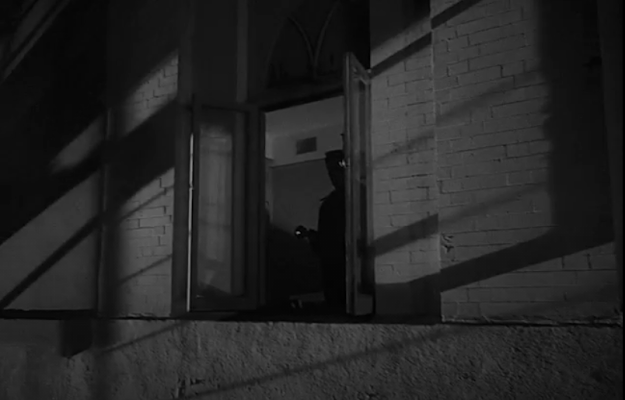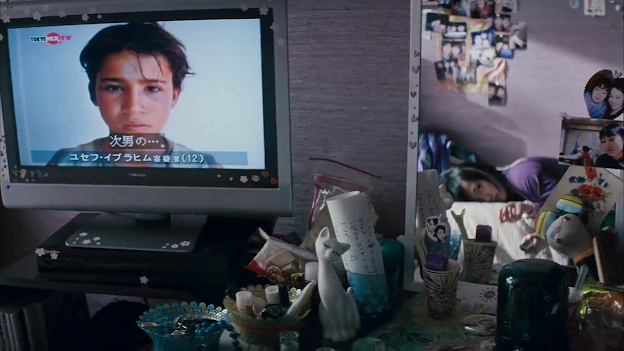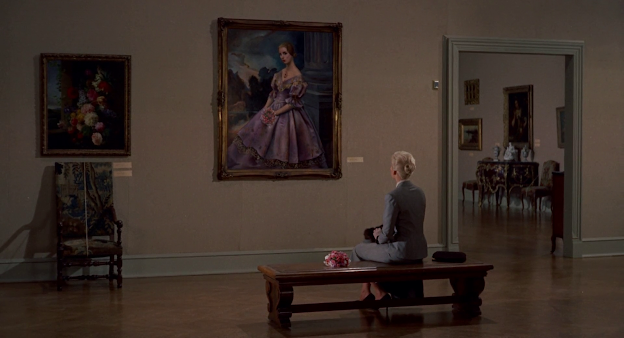Blog 6
Film Noir Effects on Touch of Evil
Paul Schrader defining Film Noir
as: “In general, film noir refers to those Hollywood films of the forties and
early fifties that portrayed the world of dark, slick city streets, crime and
corruption.” (p.582) When we look at Touch of Evil, we see most of these
elements.
First of all, the
movie includes mostly night scenes and it creates a dark environment. Paul Schrader
says that this is one of the stylistics of Film Noir: “The majority of scenes
are lit for night. Gangsters sit in offices at midday with the shades pulled
and the lights off.” (p.585) With
respect to the narrative, the crimes and problems in the Mexican border, these
kinds of scenes increasing the sense of pessimistic and dangerous environment. During
the whole movie, the audience always sense that something bad going to happen.
This dark world of the movie helps this sense of unsafety.
Another important feature of Film Noir is lots of lines and shadows on characters: “Oblique lines tend to splinter a screen, making it restless and unstable… / the central character is likely to be standing in the shadow. When the environment is given an equal or greater weight than the actor, it, of course, creates a fatalistic, hopeless mood. There is nothing the protagonists can do; the city will outlast and negate even their best efforts.” (p.586)
https://www.youtube.com/watch?v=tzcNU_1KqG0
In this specific scene we see a
lot of dark shadows of characters and most of the time face of Vargas has less
or equal lighting with the setting or the other characters. This scene also shows
the dark face of police force and hiding evidences or creating fake ones are shows
how corrupted they are. Far from the Central of America, in a little town they
create their own sticky justice system and they think that they have a right to
treat Mexican people with insulting manners.
“There is a love of romantic narration.” (p.586) Schrader says for Film Noir. We are seeing that the story is goes around our new married couple Vargas and Susie. They are portrayed as a classical American couple. However, there are other relationships in the movie like the relationship between Hank and Tana. Tana portrayed as a seductive, exotic foreign women and Hank as an American remembers his memories with Tana when he was young. Then after whole events Tana still respects him:
https://www.youtube.com/watch?v=jeccTYUrb_Q
We can say that as a film Noir
theme, the missing for the past shows itself mostly through the character Hank:”
…a passion for the past and present, but also a fear of the future. Noir heroes
dread to look ahead, but instead try to survive by the day, and if unsuccessful
at that, they retreat to the past. Thus film noir’s techniques emphasize loss,
nostalgia, lack of clear priorities, and insecurity, then submerge these
self-doubts in mannerism and style.” (p.587) Hank always talks about his dead
wife and how he could do better. He is also obsessed with the memories he remembers
about Tana. In another aspect, we can say that the fear for the future shows
itself through Vargas. He is always worried about either his country Mexico or his
wife’s future. So, like Schrader says, Vargas finds himself in a desperate
situation every time he tries to get rid of the corruption or the crimes of the
city.
Schrader puts Orson Welles in the
category of “directors who made great films in other molds also made great film
noir” (p.590) I think in Touch of Evil, Orson Welles has created such a
Film Noir which includes most of Noir elements and themes in it. Its narrative
and stylistic corresponds with Film Noir elements successfully.
Bibliyography
Schrader, Paul. Notes on Film Noir. Leo Braudy & Marshall Cohen eds. Film Theory and Criticism 7th edition, New York: Oxford University Press, 2009. (p.581-591)






Yorumlar
Yorum Gönder